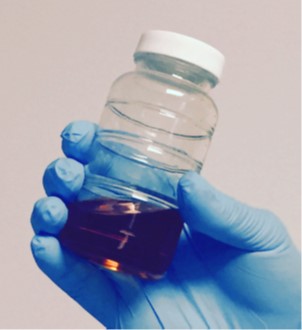氧化、硝化和硫化
润滑油理化指标: 氧化、硝化和硫化
背景
在用润滑剂会遇到空气、热力、压力、腐蚀剂和其他导致油中化学成分变化的各种因素。油品化学成分的变化会影响润滑剂发挥作用(例如润滑油中关键添加剂耗尽)。随着时间的推移,这些化学反应会导致有害降解副产物(如弱有机酸)的积聚。油品化学分析通常包括氧化物水平检测,也可能由于应用场景不同而包括硝化和硫化物水平检测。在某些情况下,还需要检查特定添加剂(如ZDDP抗磨包)是否耗尽。

氧化—在空气(氧气)和热量的作用下,油会发生氧化。空气中的氧气与润滑剂中的碳氢化合物反应形成羧酸。这些酸很弱,但随着时间的推移,浓度会变得很高,导致机械部件发生严重腐蚀。这是一个不可避免的过程,必须加以监测。为了保护润滑剂,几乎所有配方都包含抗氧化添加剂。抗氧化添加剂在油的重要成分氧化之前先行氧化。一旦这些添加剂耗尽,润滑剂性能将受到负面影响。氧化速率随温度变化很大,并且还受到润滑剂中存在的污染物(特别是金属)的影响,因此保持油的清洁,干燥和尽可能凉爽是减缓氧化的最佳方法。
硝化—硝化是发动机油中存在的令人担忧的问题,尤其是天然气发动机油。热量会导致大气中的氮气(N2)和氧气(O2)发生反应,形成一氧化二氮(NOx)。这些一氧化二氮通过产生有机硝酸盐或作为可溶性或不溶性亚硝基化合物与润滑剂相互作用。硝化会导致发动机机油过早变稠。低效燃烧,空燃比不当,工作温度低以及活塞密封件泄漏等都会导致硝化的发生。
硫化—柴油或基础油中的硫和氧、热、水之间的反应可以产生含硫化合物,包括硫基酸。大多数时候,这些含硫化合物通过排气排出,但有些可能会留下并进入发动机腔体。当这些酸与油中添加剂或润滑剂的基础油发生反应时,就会出现硫酸化。在较低的工作温度下,例如在启动期间,酸会冷凝并更容易与油接触。硫化会导致粘度增加并形成清漆,污泥和沉淀物。
检测润滑油理化性质的方法
►红外光谱
红外光谱使用辐射源,探测器和计算机来研究物质与光的相互作用。氧化和硝化产物的峰值在1600和1800 cm-1之间。硫化产物峰值则在红1120-1180 cm-1左右。由于氧化,硝化和硫化没有绝对的参考标准,因此总是与新油的结果进行比较。例如,如果在指定时间内对发动机油进行采样,1650 cm-1左右的硝化峰值明显变得更加强烈,则可以断定发生了硝化反应,可能是由于空气/燃料比不当造成的。
有用于实验室级FTIR检测以及便携式现场检测的方法。ASTM E2412描述了FTIR测量这些属性的标准。此外,还有定义氧化(D7414),硝化(D7624)和硫化(D7415)的具体标准。为了在现场监测油品化学成分,ASTM D7889使用了像FludScan这样的光栅红外光谱仪,该仪器易于操作,不需要经验丰富的技术人员。
►粘度
测量氧化、硝化和硫化的唯一直接方法是通过光谱。间接方法是测量粘度和阻抗。粘度是流体流动阻力的量度。当油中发生氧化,硝化或硫化时,形成的冷凝产物将导致粘度增加。无论何种原因引起的粘度变化都是测试的关键参数,因此粘度已经是任何润滑剂状态监测的一项检测指标。有许多方法(ASTM D445和ASTM 7279等)使用仪器进行实验室和现场检测,包括斯派超科技的 MiniVisc 3000便携式运动粘度计。
► 阻抗
另一个间接测量方法是检测阻抗,它通过测量流体的电导率或介电特性获得阻抗。这些性质受到碳氢化合物极性变化的强烈影响,碳氢化合物的极性变化对羧酸特别敏感。水和其他降解副产物等其他污染物的存在也会明显导致阻抗的变化,因此该测试通常用于确定油的整体状况。
总结
通过对润滑剂的氧化、硝化和硫化水平进行检测,可以确定润滑油的使用寿命,还可以发现操作不当、发动机部件(活塞密封件)故障或使用的润滑剂不正确等错误。有间接方法可以检测润滑剂发挥作用的能力,如测量粘度,但确定其是否发生氧化,硝化或硫化的唯一直接方法是使用红外光谱。FTIR仪器和方法可供实验室环境中的一般或专家用户使用,斯派超科技的FluidScan允许使用便携式红外光谱仪在现场(或实验室)检测油的化学成分。
获取免费电子指南并了解更多信息
